Wearing the new colours of Movistar Team, 2021 means a new and refreshing chapter in the career of Annemiek van Vleuten. As she’s about to start her season in Omloop Het Nieuwsblad, we catch up with the three times World champion and current European champion to know about her first experiences in her new team, her ambitions for the season and many other aspects of her personality as an athlete that may, hopefully, complement the extensive feature on her we published in late 2020.
Words: Saúl Miguel
Photos: Photo Gomez Sport / Movistar Team (when noted) and Annemiek van Vleuten
New horizons
Annemiek van Vleuten is not generally known as an early season performer. She tends to peak later in the season, with many kilometres in her legs. It’s an approach that works well for some of her usual goals such as the Giro Rosa and the World Championships, but not ideal for someone who also loves the spring classics.
Van Vleuten changed her off season approach a little bit last year. After a couple of weeks without touching the bike, she went to Colombia in late 2019 and stayed there for a long training camp in altitude, and went back for yet another training camp in early 2020 before her season’s debut in Omloop Het Nieuwsblad. It paid off, as she won the Flemish race for the first time in her career, in dominant fashion. But then came the lockdown, and the rest is history…
For 2021, Van Vleuten has been able to pretty much replicate her off season preparation. “I went to Colombia invited by Simon Pellaud, the Swiss rider who lives there and rides for the team Androni Giocattoli.” She already knew him from her previous visits to the country. “He made a plan and I just followed it. We toured some regions together with Esteban Chaves’ brother, Brayan.”
There are some inherent risks with travelling in the covid-19 situation, but the whole thing went fine. “Had I stayed in the Netherlands I wouldn’t have been able to do the same, not only because of the altitude but also mentally, the feeling of riding free, training free”, she adds.
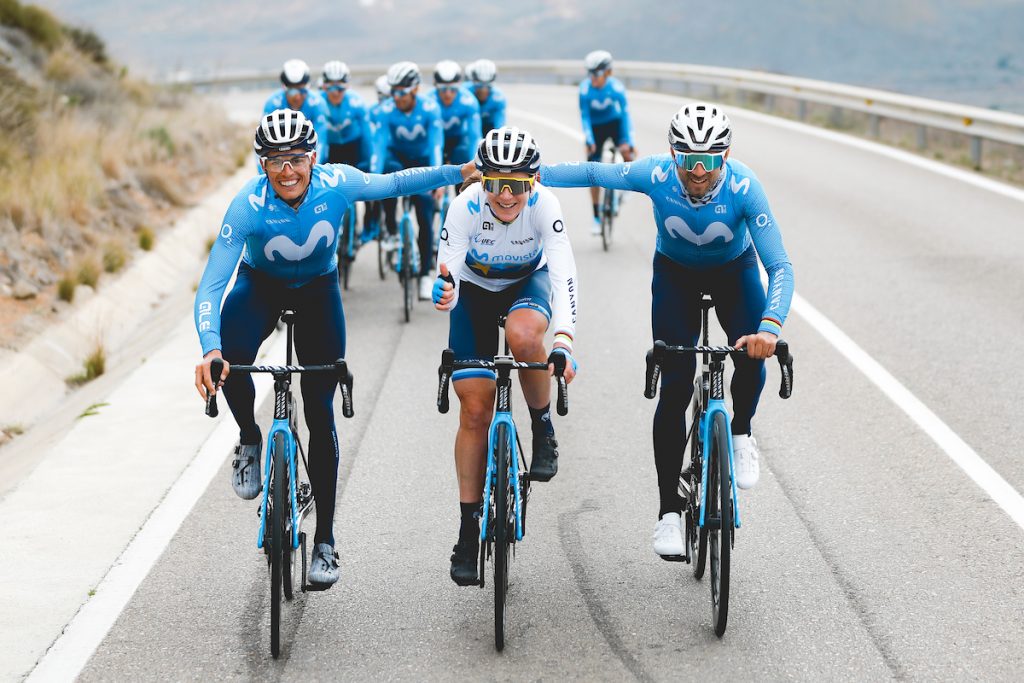
Back in Europe, it was finally high time to meet her new teammates in Movistar Team during the training camp organised in Almería. There was obviously some uncertainty involved, as basically everything was going to be new for her, but it turned out to be a great experience. “Initially I was afraid that it would cost me a lot of energy because 99% of the people were new for me, but actually I came back home with so much new energy. My legs were tired but my head wasn’t tired at all. It was energizing and above my expectations.”
Van Vleuten mentions the reasons why it was such a good time on and off the bike: “The Movistar training camp in Almería was great because I could meet the girls but also did some hard training rides with the guys. It was a perfect combination for me for training both hard and easy and get to know everyone”, she says.
«It’s been pretty much an ideal off season when it comes to training and also with a lot of happiness in nice places with the Movistar team»
The final piece in the puzzle of her pre-season preparation has been a second stay in altitude, on her well known roads of the Canary Islands. “I have also had a great training block in altitude in Tenerife after the Almería camp, a bit longer than three weeks so I included some additional hard training. It’s been pretty much an ideal off season when it comes to training and also with a lot of happiness in nice places with the Movistar team.”
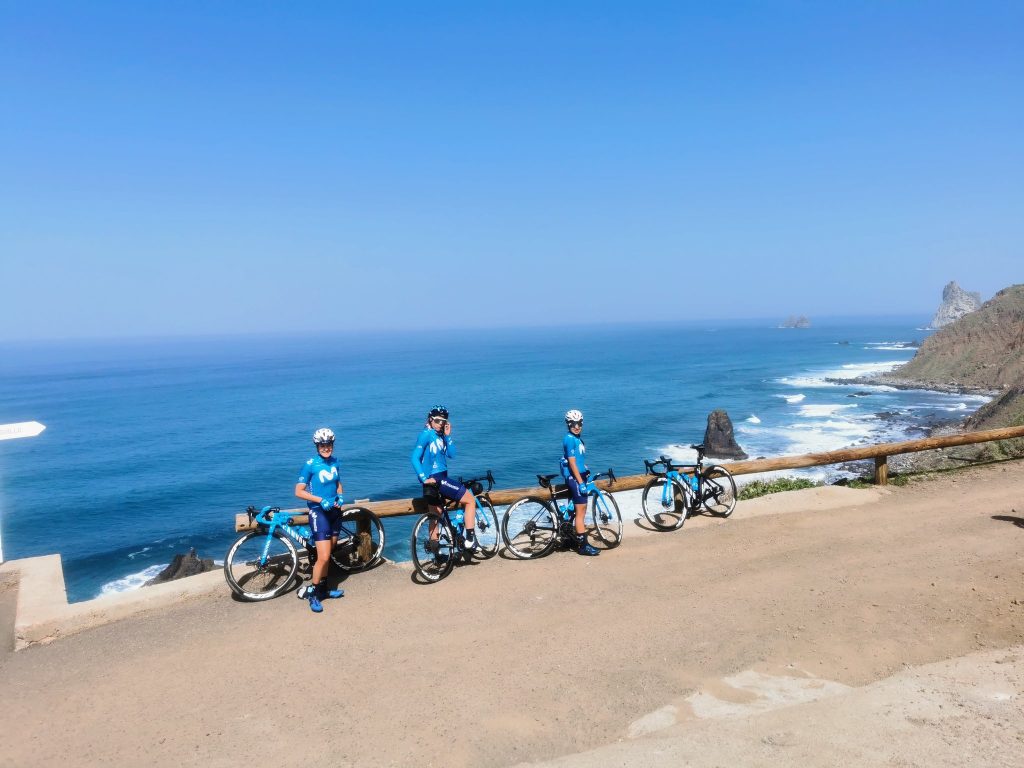
For someone like her, who enjoys and values the process towards her goals perhaps as much as the goals themselves, it’s important that it’s been an enjoyable one. That gives confidence. “I trust the process – it’s been mentally a good time for me and I’m confident it will pay off”, the Dutch rider says, before adding that she expects to be good in the first races but her peak may come a bit later, from the Tour of Flanders to the Ardennes Classics.
Van Vleuten has been doing training camps in Tenerife since 2015, and she has witnessed some changes for the good recently there, with more and more women adding altitude to their training schedules. “In the past years it was usually one girl (me) and a hundred thousand boys” [laughs]. “Now I have more training company. That makes it easier – when you are here for three weeks and you have to do it by yourself it’s a bit harder.” The company included some of her new teammates in Movistar. Again, another change to get to know each other better, and she even mentions and additional benefit: “It’s been a great opportunity to keep practising my Spanish, too.”
Movistar’s commitment to the development of women’s cycling might have been obvious since 2018, but now Van Vleuten has been able to experience it herself. She looks impressed when she talks about it. “I was surprised and honoured that they put me in the centre of all the team photos, Already that avatar picture they made sent a very strong message – no words but just a picture.”
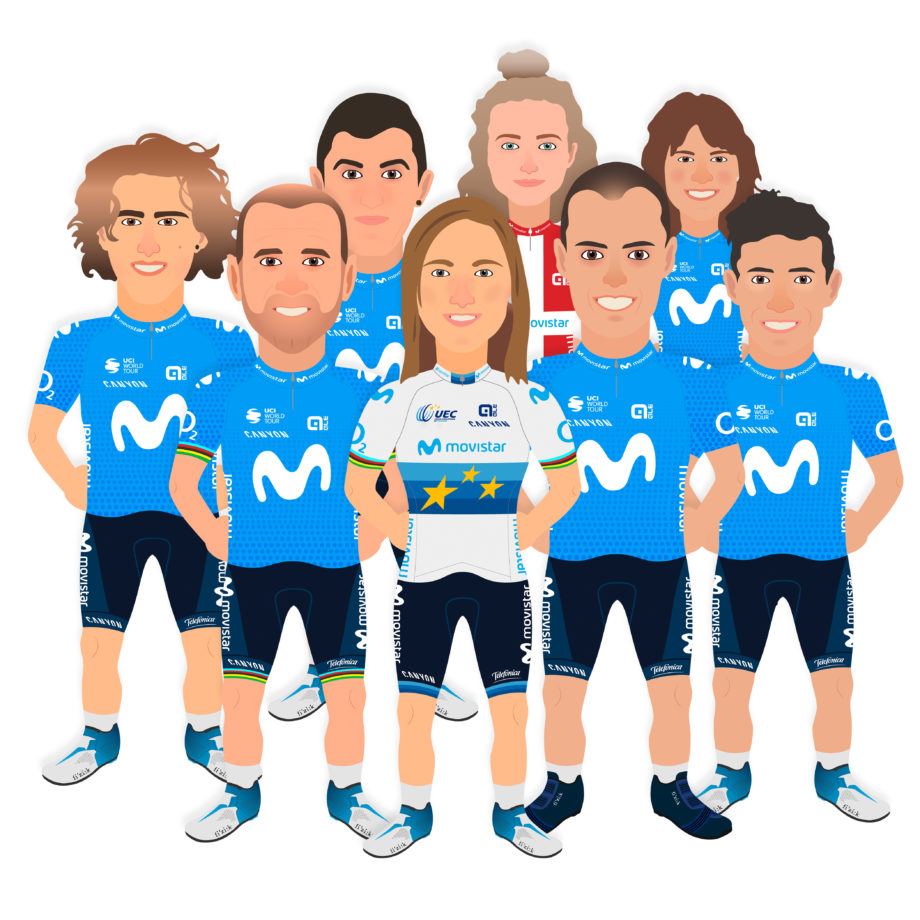
“I loved it but not because it was me in the centre, but because it showed how seriously they take the women’s team, more than any other team I’ve been in. They treat the men and women equally, that’s for me the big step. And not even the guys found it weird that I was in the middle”, she concludes with a funny smile.
«I hope I can maybe add something but not change anything because it’s already good, and that’s one of the reasons why I chose Movistar»
Van Vleuten modestly adds some impressions about her first experiences with the team. “I see a good culture and a great atmosphere here. I hope I can maybe add something but not change anything because it’s already good, and that’s one of the reasons why I chose Movistar.”
“When I joined the guys for some training rides they also invited the other girls to see if they wanted to join, so it’s not only me – everyone counts, they get everyone on board and that’s great”, she continues. And, recalling her first experience when she shared a training ride with part of the men’s team back in 2014, in Sierra Nevada, Van Vleuten notes that “I saw they still have the same mentality and same atmosphere as in 2014, and it’s still about having fun training together. Alejandro was again the first one to attack! Nothing to do with age.” We’re pretty sure nobody will be surprised to read this.
As she has already mentioned, not unexpectedly, Van Vleuten joined her male colleagues for some of the sessions in Almería. She’s been doing big training blocks with the men of her former team Mitchelton-Scott as part of her pre-season schedule in the previous two seasons. However, she plays down the importance of it. “Training with the men is not essential for me”, she makes clear. “Out of the 365 days of the year I join professional guys maybe 10 days. For all the other days I have to push myself.”
But training with pro male riders is not just about training harder than usual. It’s also about making those hard efforts more enjoyable. “What’s nice about the days I join then, even if they are hard, is that they don’t cost me mental energy because they dictate the speed for me, pushing me out of my comfort zone. If I had to do that all by myself it would be mentally harder. It’s a hard day for my legs but I have a lot of fun with them and gives me energy.”
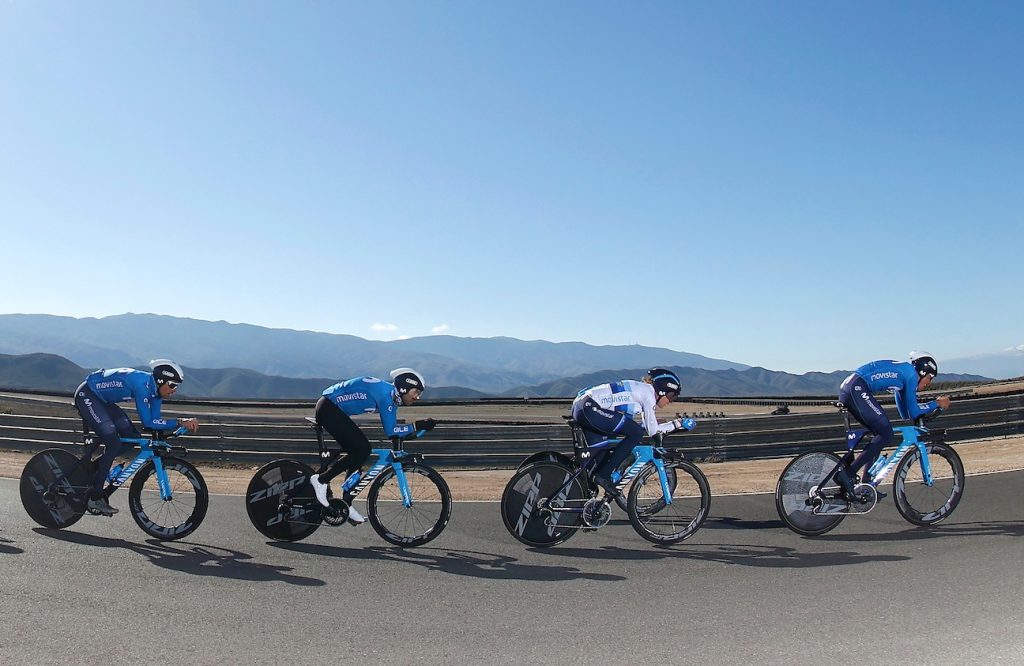
She continues, adding reasons why it’s convenient for her. “They key for me is that, being 38 years old, I need harder trainins sessions than my younger teammates, my body needs more stress. I can do that by riding more at the front, doing more hours or indeed joining the men some days.”
Van Vleuten adds a word of caution, stating that the way she trains may not be appropiate for others. “I wouldn’t say that my schedule is good for everyone and I’m aware that I don’t want to be a role model so that everyone should do what I do, especially younger riders. It’s a process of years”, she concludes.
Racing against former teammates and friends
Mitchelton-Scott has played an important role in the development of Van Vleuten’s career. They truly believed in her abilities as a rider and helped her maximise her skillset. Moreover, the Australian team has been sort of a second family for the Dutch rider for 5 years. One can’t help wondering if it will be difficult to change her mindset in order to compete against her former teammates.
“Not at all”, Van Vleuten quickly says. “It’s about speaking with your legs, fighting with your legs in a respectful way. For example I’m a very good friend of Marianne Vos but we race against each other and I really like that – and I think she does, too. I’m used to doing this and it’s not going to be different.” She’s rather focusing on a different aspect. “The challenge for me now is how to ride together with my Movistar teammates and how to get the best out of the team. My former teammates will be now like more ‘Marianne Vosses’ [laughs] around, because I still see them as my friends.”
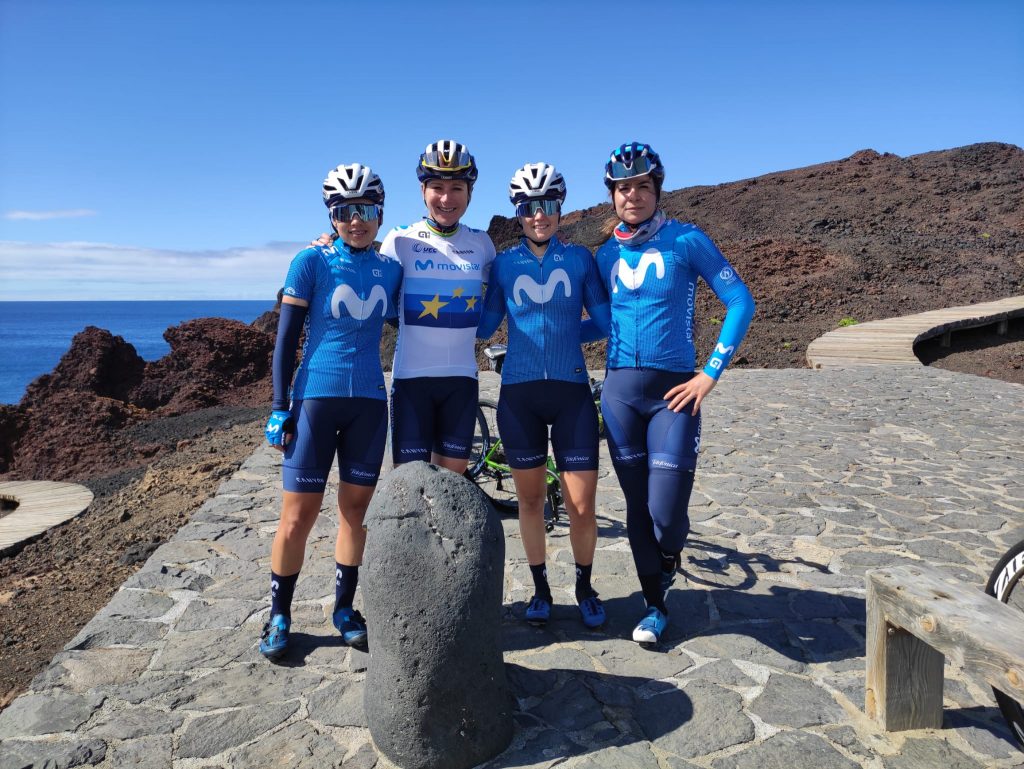
It’s the same attitude towards the other members of the peloton in general. “I approach everyone else as respectful rivals – for example sometimes I invite other team’s riders to have dinner together in the hotel in altitude in Livigno and the next day we’re racing against each other. It’s simply completely normal.” And she adds, speaking again about her former teammates: “I have to say I’m super happy to see Amanda Spratt step up as a leader in my former team. She’s ready for it.”
The inner struggle
There are many who apparently see Annemiek van Vleuten as some relentless training machine, who endures insanely hard sessions on the bike. Sort of a pain-chasing warrior who enjoys suffering. While she has said herself several times that she, in a way, likes to suffer on the bike, that statement must be nuanced.
She also questions herself and struggles in some of her training rides. “It happens to me very often. Especially on days that I have to do high intensity trainings, where I have to push myself to the maximum, sometimes you wake up and think ‘why?’ Cycling is such a relative and short term thing, and yes, sometimes I struggle with that. You also wonder some days if you will be able to do it this time, if you are fit enough for it.”
«‘What the hell am I doing? Why do I do this to myself?’ I also have those thoughts. I’m just a person who struggles a lot sometimes, I’m not a robot»
It’s something that can happen in competition too. “During 99% of the time trials I’ve done, I was thinking after 1 kilometre: ‘What the hell am I doing? Why do I do this to myself?’ It’s something that I share with my teammates, that I also have those thoughts. I’m also just a person who struggles a lot sometimes, I’m not a robot”, Van Vleuten admits.
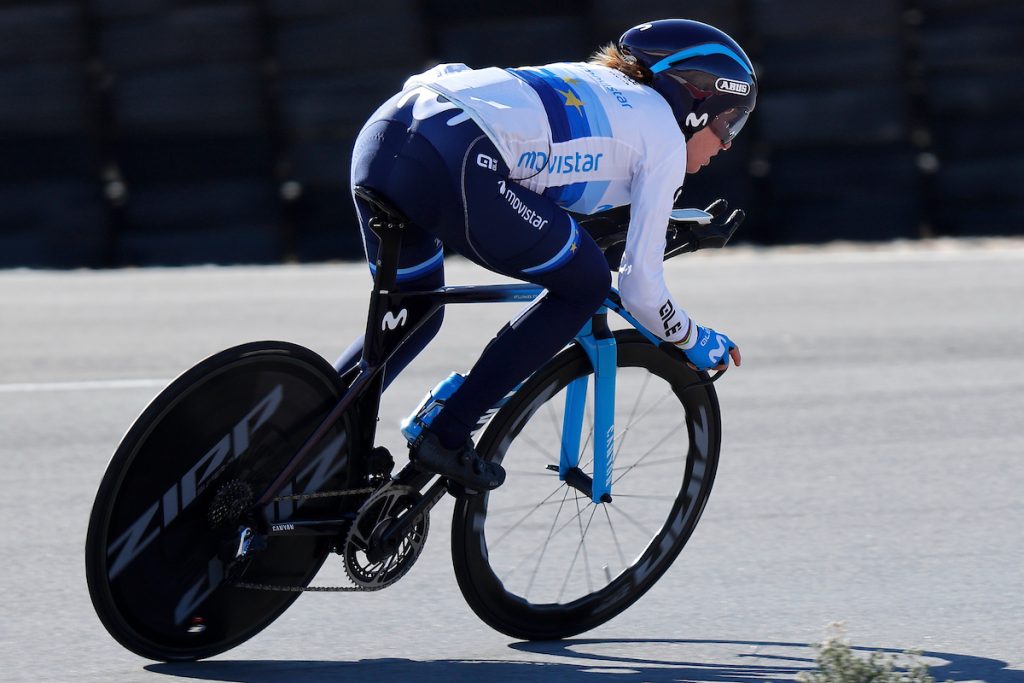
But she has a way of dealing with that, sort of a mental trick. “I tend to think that I have a certain number of mental points that I can use every year when it comes to suffering and pushing myself to the maximum. For example, when I train with the guys I don’t feel that I’m using those mental points because yes, I suffer but I also have a lot of fun with them.”
“That’s also why I don’t want to do for example a thousand time trials per year – I want to save those points for the specific races in which I really want to perform”, she continues. “In that way I’m different for example from Marianne Vos in the fact I choose my races and then I’m ready to suffer and take risks in the race and whatever it requires, but only in those I’m really looking forward to, whereas she does that in every race. She likes that process more than I do, I think.”
Van Vleuten adds a more cheerful note, emphasizing the nicer side of the many hours spent in training. “That doesn’t happen to me during longer rides, because I take them as an amateur cyclist and I really, really enjoy them, the views, the mountains, the chance to see different parts of the world.”
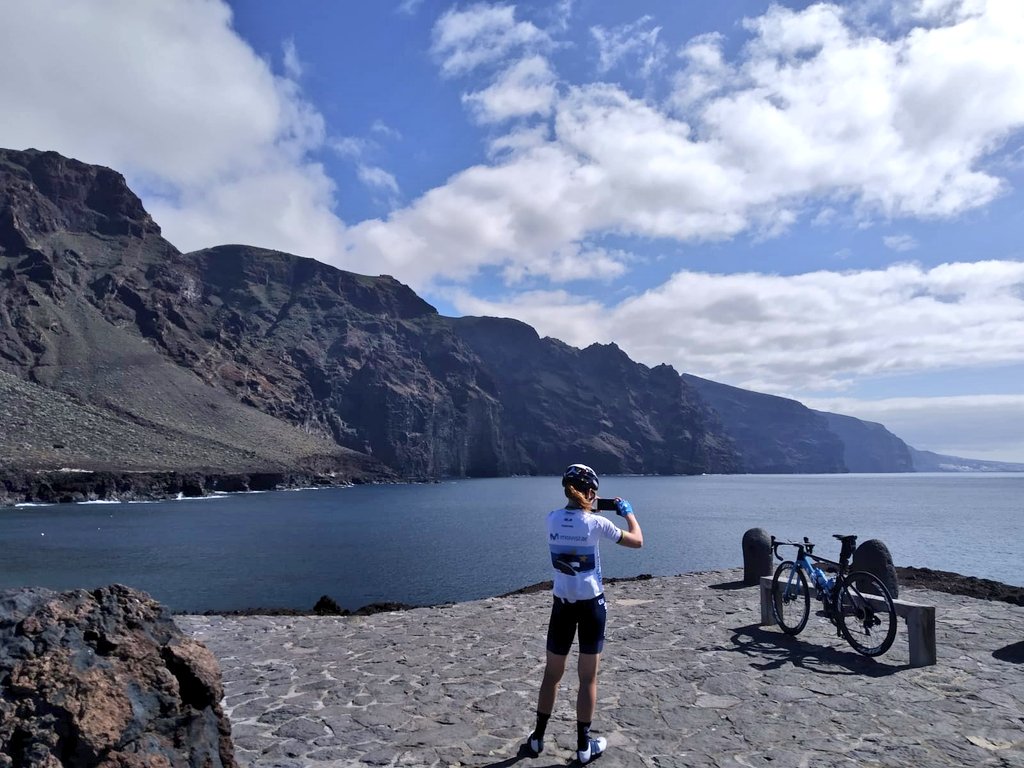
Living the breakthrough of women’s cycling
Even though there’s still a long way to go and many issues to be fixed in women’s cycling, one can’t deny it’s a flourishing sport nowadays. The level of the competition and the number of races shown on television have dramatically gone up in recent years.
However, it was very different not so long ago. In 2011 the only women’s race that was shown on TV was the World Championships in Copenhagen. Van Vleuten, who had won the Tour of Flanders that year, was racing there. “It was a boring race in a boring circuit” she explains, “and that left me so disappointed because it was a shit showcase for women’s cycling. That was the one moment in all the year to get more people on board with women’s cycling but there weren’t the ingredients to make a good race with that flat parcours. It was the same with the first years of La Course on the Champs Elysées, so I’m happy they’ve changed that.”
«La Course in 2018 made me realise how important live TV is for the development of women’s cycling»
Van Vleuten, as many of her peers likely did, used to feel a big sense of responsibility whenever they had the rare chance to have their races on television. “Back then I felt really responsible, and also happy when we had the ingredients to put on a good show in those races with live TV.”
Those right ingredients are easier to find nowadays. There are more and better races in the calendar, and most of them are broadcasted live. “One recent race that left me with a particularly good feeling was Amstel Gold Race in 2019, when Kasia Niewiadoma won”, she mentions as a modern example. “Of course my first impression was the dissapointment of not being able to catch her before the line, but the second one was that the race had been a great showcase for women’s cycling. Also the way Kasia attacked, that showed a lot of ‘grinta’. It was a very cool and exciting race for people to watch.”
Another obvious example that comes to mind would be the 5th edition of La Course by Le Tour de France, which Van Vleuten won in a thrilling battle against Anna van der Breggen. “La Course in 2018 made me realise how important live TV is for the development of women’s cycling, it’s the most essential step to make our fanbase grow.”
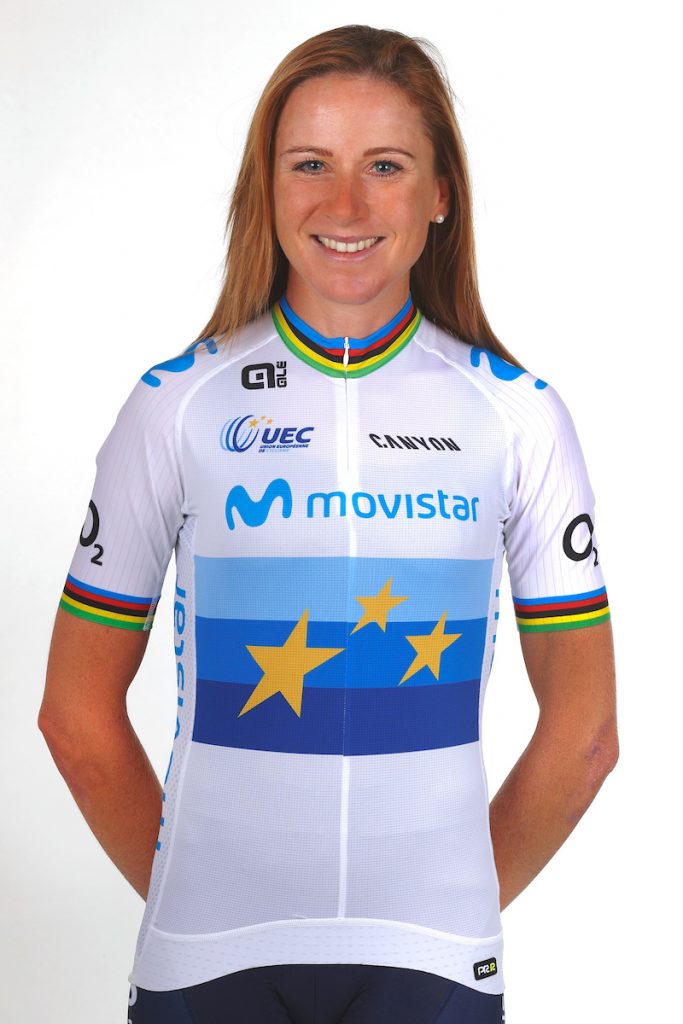
She keeps emphasizing the importance of live television. “People talk about money and stuff but I say that the first step is to have the races there, to have them organised, and to show them on TV to build a fanbase that want to watch us race. I feel that fanbase is growing and I also feel a bit less responsibility to put on a good show because we have a bit more credit now”, Van Vleuten concludes with a smile.
High mountains aren’t a very common feature in the majority of women’s races. Van Vleuten, arguably the best climber in the world nowadays, has conquered some of the most famous summit finishes in recent years, such as the Izoard or the Zoncolan. But she doesn’t want to complain about the relative lack of these elements in the calendar. “I don’t want to frustrate myself about things I don’t have in control”, she says, showcasing a common attitude of hers.
«Having the Mortirolo or the Zoncolan there helps people understand what we’re doing, as they know the names, the history»
Just like in many other aspects of her sport, Van Vleuten’s view is shaped by what she considers beneficial for the sport as a whole and not just for herself. “I’d like to see more races on the mountains, and of course finishes on epic climbs suit me the best”, she admits, “but it should be balanced, considering how many climbers we have in the peloton. Super hilly races wouldn’t be necessarily the most exciting to watch and that’s something very important for me as well, to have races that are beneficial for women’s cycling in general and not just me.”
At the same time, she recognises that having some legendary climbs in the calendar helps potential fans build a connection with the riders and their races. “I want to give a big shout out to the Giro Rosa organisation for including some famous, epic climbs on almost every edition. Having the Mortirolo or the Zoncolan there helps people understand what we’re doing, as they know the names, the history.”
She puts an example. “This year with La Course on the circuit with the Mur de Bretagne, even if it’s not a high mountain, it has a name and helps people get how hard what we do is. I also hope that they include at least one famous climb when they organise the Tour de France for women next year.”
The breakthrough that women’s cycling is experiencing nowadays is not just about the increase in televised races or the higher level of competition. The calendar is also growing and evolving every year, with new and better races being added to it. Van Vleuten is unsurprisingly enjoying it. A lot. “The apparition of new races means a lot to me. It gives me a new calendar every season and a renewed energy for it. For someone like me who gets energy from new things it’s just fantastic. You don’t get the feeling that it’s ‘just another year’ anymore.”
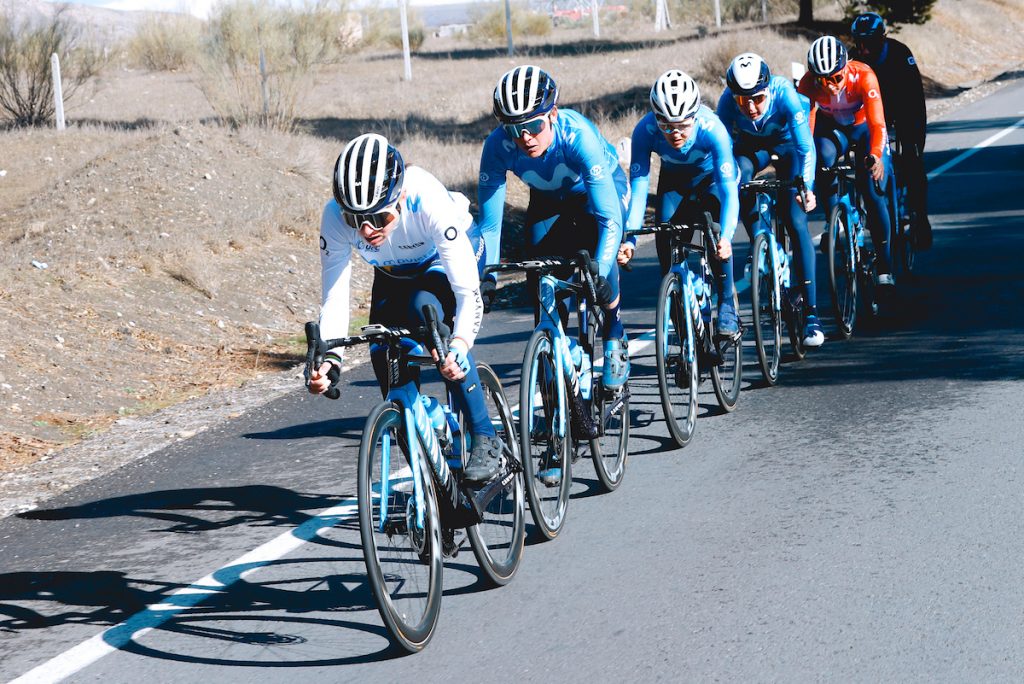
“In 2022 we’ll hopefully have a Tour de France, a second Paris-Roubaix… It’s a development that keeps going every year and it’s super energizing for me, I think also for many other riders and for the people to watch.” The current generation of riders is a lucky one. One can’t help wondering if some other succesful riders of the same generation as Van Vleuten, like Emma Johansson or Evelyn Stevens, would have kept riding instead of retiring at quite a young age if the calendar and overall exposure of the sport had looked like today’s just 4 or 5 years ago.
ASO have been often critizised for their approach with women’s cycling and their refusal to make La Course grow into a bigger and more consistent event. However, with the addition of the first ever women’s Paris-Roubaix to the current calendar and the plans for a women’s Tour de France in 2022, things seem to be changing.
«The apparition of new races is fantastic. You don’t get the feeling that it’s ‘just another year’ anymore»
Moreover, their plans for the race look really sensible and it’s probably the best realistic option for a start. ASO wants the first edition of the women’s Tour to start in Paris, on the same day the men’s Tour ends, and to finish on the following Sunday after 8 days of racing, making it a stage race akin to a men’s Paris-Nice. That would make a 4 weeks Tour de France in July if we include men + women. It would also take place in a good spot in the women’s calendar.
Van Vleuten agrees that it looks like a good plan. “I don’t think it would be possible to bring the attention we need if a women’s Tour de France would be organised at the same time as the men’s, so I really like the concept and I believe in it”, she says, before adding that “I don’t have anything against the Champs Elysées, it’s amazing for the sprinters there and to have it combined with different stages that suit other riders would be great. I don’t think we need to start with a 3 weeks race so a 8-9 days stage race seems perfect for a start.»
Performance milestones
It would be difficult to pick one specific race that stands out among the number of impressive performances Annemiek van Vleuten has shown throughout her career. Their range goes from ITT’s to high mountains to classics. But there are two which have a special significance for her. Her first choice didn’t even deliver a result. “The Rio Olympics was my breakthrough as a climber. It was the very first time I was able to drop everyone uphill. I surprised myself at how strong I felt on that climb, and before I attacked I was wondering if the others were giving their all because I wasn’t even suffering.” We all know how that story ended on that wet descent, but she still talks about it with a sense of pride and satisfaction for that remarkable performance. Quite rightly, we may add.
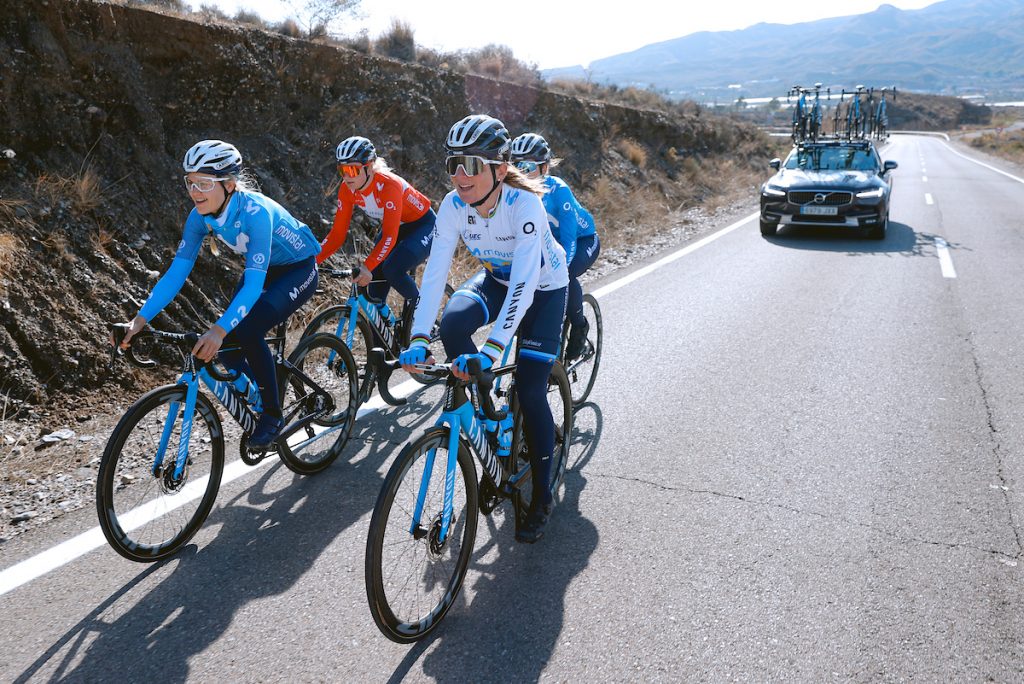
Her second choice is a special one as well, for different reasons though. “The ITT in Bergen 2017 needs to be on that list. In Innsbruck 2018 I had less pressure, but in Bergen I put a lot of pressure on myself because after Rio I wanted to prove that I could finish it off. I knew I was in good shape and that I had the opportunity to become world champion for the first time but I had to deal with a lot of that stuff in my head. I also had rain, whereas Anna van der Breggen had drier roads. For me it’s among my top three performances ever.”
«Bergen gave me a lot of freedom when it comes to dealing with the pressure of being able to pull something off»
The pictures of Van Vleuten bursting into tears and hugging her mother after the race were unforgettable indeed. She explains their meaning: “I wasn’t in tears because of the memories of Rio, as some people believed, but because I finally showed that I was finally able to pull something off that was really great, especially after I had messed it up in the Giro that year in the echelons stage.”
“Bergen gave me a lot of freedom when it comes to dealing with the pressure of being able to pull something off. I showed that I could do it and from then on I started to perform in a more relaxed way.” That was obvious when she won her second rainbow jersey in the ITT in Innsbruck one year later. That raw, uncontrollable emotion wasn’t visible anymore.
Van Vleuten has won almost everything that can be won in cycling, at least for a rider with her skillset. But she’s still hungry for more. “I would really love to win the Tour of Flanders again. I won it in 2011, in a different moment of my career, riding more as a classics rider in the same team as Marianne Vos. Two races I’ve never won but I’ve been close several times are Fleche Wallone and Amstel Gold Race, so they are obviously high on my list.”
The Olympic paradox
Of course there’s the Olympic Games. But she’s far from being an athlete obsessed with that competition. She likes to emphasize the importance of the rest of the calendar. “I don’t want to reduce an Olympic year to that one race, or two races, there’s so much more. I’ll be focused on the races of the calendar until Vuelta a Burgos and then I’ll change my focus to Tokyo. That’s the way it works best for me. There are so many more beautiful races and it would be so sad not to give them the attention they deserve.”
«I’m a little bit afraid that the Olympic race might not be the best showcase of what women’s cycling can offer»
An additional issue about the Olympic road race is that, unlike the men, who will form a 130-rider peloton there, there are only 67 spots available for the women. That’s something that causes concern for Van Vleuten. “Going back to feeling the responsibilty to make women’s cycling more interesting I’m a little bit afraid that the Olympic race might not be the best showcase of what women’s cycling can offer. I think for example Flanders or Amstel will be far more interesting and better when it comes to showing the current level of women’s cycling. I’d really, really would love to have an exciting Olympic race because everyone will be watching. But with only 67 riders, many teams won’t be taking responsibility because they are so small”, she adds.
Van Vleuten notes something more positive anyway. “But I always look forward and I’m really happy that for the next edition the number of riders and size of teams is planned to be more equal to the guys and that should make it more interesting. It’s one of our big moments to shine.”
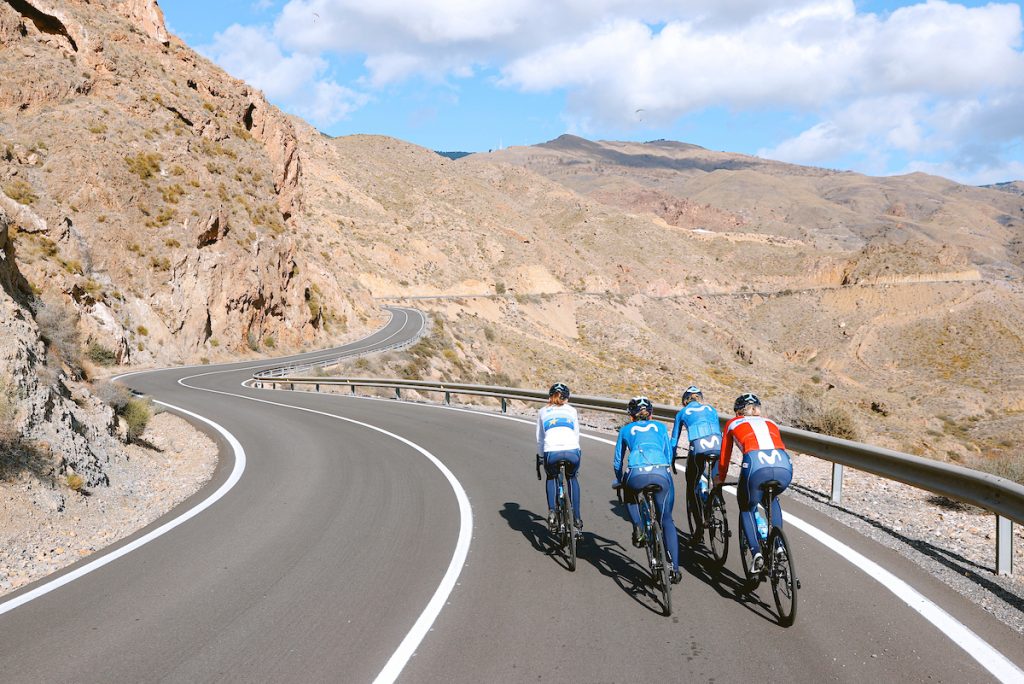
She keeps explainig some additional issues about that competition. “People look at me with surprised faces when I tell them that the Olympics will be the lowest level race among the top tier ones we’ll have in four years because of the very limited number of riders. But I still hope we can put on a good show despite my concerns.”
That’s what happened in Rio. It was a twisted, dramatic race with a thrilling outcome, which brought some attention and new viewers who got hooked. Van Vleuten has been part of the Dutch selection for the Olympics since 2012 and she has a noticed a growth in the fanbase from one edition to the next. “It’s important because I feel we got more fans on board after every Olympic cycle”, Annemiek acknowledges as a final note.


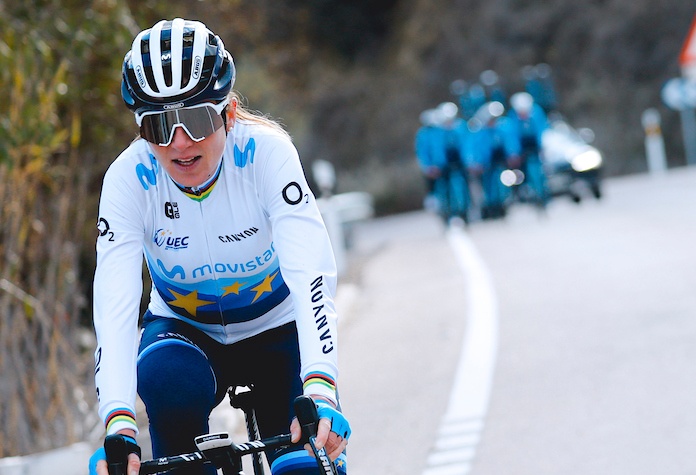






Ya la primera parte me encantó y ésta también.
Interesante su opinión sobre cómo deben ser las carreras.Espero que los organizadores la tengan en cuenta para hacerlas más atractivas cara el público.
Gracias Saúl.